Speech Communication in Worship
A showcase featuring some thoughtful resources that can help all who participate in worship through public speaking do so hospitably, succinctly, wisely, and with imagination.
Worship is often described as a dialogue between God and God’s people. We speak to God and listen in anticipation for God to speak to us. Some of us may have the privilege of helping to lead worship by serving as a lector, liturgist, presider, or worship leader. Speaking in worship is a delightful opportunity to serve God and the Church; it is also an area in which many churches and individuals can grow!
One of the primary ways we hear God in worship is through the spoken word of Scripture. However, sometimes in planning (and participating) it’s easy to forget this aspect of worship because it seems so simple compared to music or preaching. When planning music, one must rehearse, make sure there are enough tenors, plan key transitions, and ensure the drums aren’t too loud (or soft). Scripture reading or speaking in worship seems simple in comparison, right?
Yes and no. Though it may be logistically easier, it is wise for us to remember the gravity and delight of being inspired by God’s voice through the Bible, convicted by a call to worship, or encouraged by a benediction. These spoken elements can lead us into a deep remembering of God’s past, present, and future actions.
In a culture where we are daily bombarded by words used as “camouflage and as weapons,” Thomas G. Long writes in Testimony: Talking Ourselves into Being Christian, the word of God calls us back to the Living Word. Here are some thoughtful resources that can help all who participate in worship through public speaking do so hospitably, succinctly, wisely, and with imagination.
Publications on Speech Communication in Worship
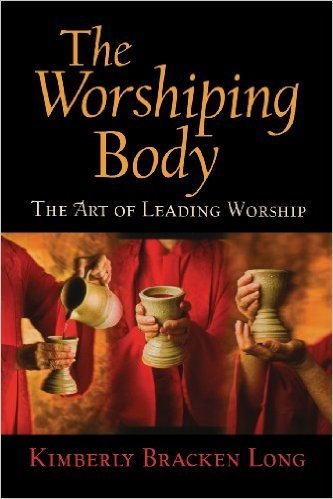 |
The Worshiping Body: The Art of Leading Worship (Westminster John Knox Press, 2009) Kimberly Bracken Long Written for pastors and worship leaders, this poetic and practical meditation is filled with stories that compel the reader to consider the embodied practice of worship leadership and participation. Worship isn’t simply about the mind; it is about the eyes, ears, mouth, hands, feet, and heart. Long begins with an easy-to-grasp but robust theology of embodiment (both individual embodiment and the church as the body of Christ), and she includes recommendations for further reading at the end of each chapter. Though her primary context is a traditional Presbyterian form, the attention she pays to each movement of worship is valuable to ministers across the denominational spectrum. |
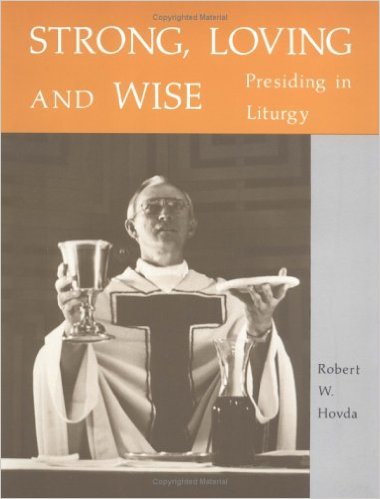 |
Strong, Loving and Wise: Presiding in Liturgy (Liturgical Press, 1981) Robert W. Hovda In this classic and often-cited book, Hovda describes the spirit and perspective necessary to preside over worship in a way that represents Christ. This is a volume to meditate on and re-read often, as Hovda invites us to participate and lead the “kingdom-play that is liturgical celebration” (p. 49). |
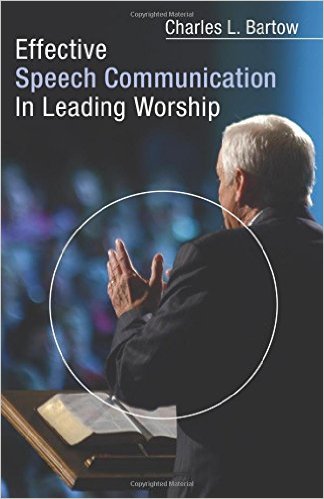 |
Effective Speech Communication in Leading Worship (Wipf and Stock Publishers, 2005) Charles L. Bartow This book was designed to be a text for workshops or seminary classes. Bartow first talks generally about phrasing and emphasis in spoken communication, then devotes a chapter to each of the principal moments of spoken worship leadership: Scripture reading, calls to worship and benedictions, confessions and responsive praises, and the sacraments of baptism and communion. Though this book seems most useful to congregations who already follow a more traditional order of worship, Bartow’s explanation of each movement of worship will be informative and inspiring to leaders from other traditions. |
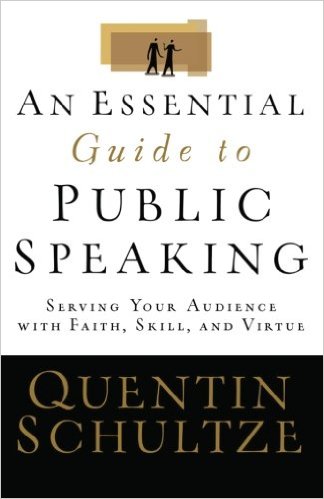 |
An Essential Guide to Public Speaking: Serving Your Audience with Faith, Skill, and Virtue (Baker Academic, 2006) Quentin Schultze Though not written specifically for public speaking in worship, this volume provides a foundation for the “noble practice” of public speaking. Using the history of rhetoric in the church, Schultze reminds the reader of the personal character and learned skills that can equip one to speak well. Helpful “Servant Speaking Tips,” checklists for topic and audience research, and guidance about wise use of presentation software are included. |
Publications on Reading Scripture in Worship
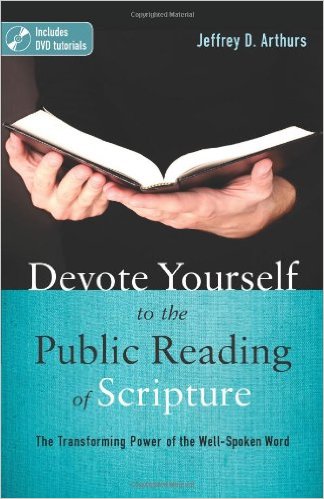 |
Devote Yourself to the Public Reading of Scripture: The Transforming Power of the Well-Spoken Word (Kregel, 2012) Jeffrey D. Arthurs This short volume was written to “increase the quantity and the quality of Scripture reading in church services.” Arthurs, a professor of preaching and communication at Gordon-Conwell Theological Seminary, explains the process of reading Scripture well: preparing, establishing a culture that values Scripture reading in worship, communicating with body language (mannerisms, gesture, posture, and eye contact), and communicating with one’s voice. The book also offers a strong biblical and historical apologetic about why more and better Scripture reading is necessary in the church today. The final chapter includes a few creative ideas for “adding some spice” to Scripture reading. The included DVD is a helpful resource for training lectors; specific chapters may be beneficial for worship committees or church councils who are exploring how church’s theology of the centrality of Scripture is communicated in worship. |
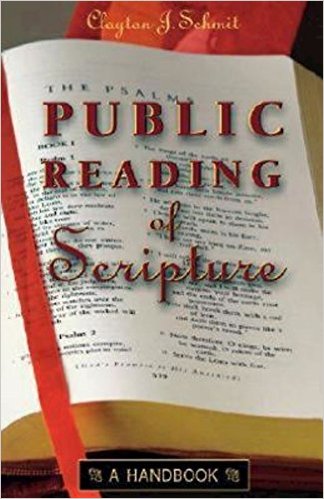 |
Public Reading of Scripture: A Handbook (Abingdon Press, 2002) Clayton J. Schmit Schmit wrote this small book particularly for lay Scripture readers. It is formatted for use in a small group and includes discussion questions and exercises at the end of each chapter. Unique foci in this volume include rationale for why lay members rather than the pastor should read Scripture in worship and the spiritual gifts required for doing that. Schmit also teaches how to prepare to read in public through physical technique and biblical study, tips for oral interpretation, and additional creative ideas. |
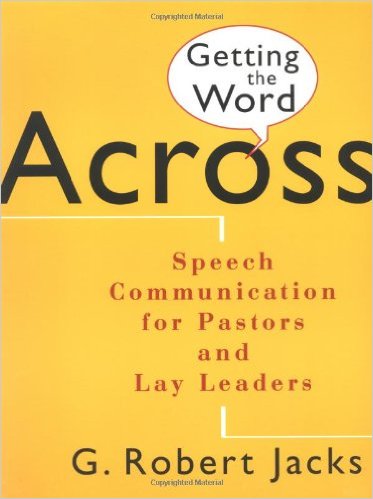 |
Getting the Word Across: Speech Communication for Pastors and Lay Leaders (Eerdmans, 1995) G. Robert Jacks In his warm, conversational tone, Jacks explores what makes a good Scripture reading: transparency, presence, attention (or not) to punctuation, and rehearsal. Jacks also explains some speech communication basics: speech physiology, breathing, vowel sounds, articulation, and pronunciation. Reading this book might be like taking a course from Jacks on the subject: There’s a little whimsy and a lot of helpful content. |
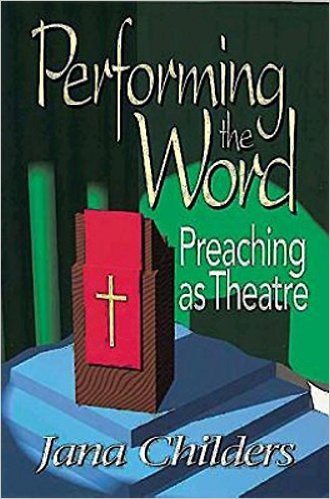 |
Performing the Word: Preaching as Theatre (Abingdon Press, 1998) Jana Childers What can the preacher learn from the actor? A lot, according to Childers. In this volume (mostly addressing preaching, but also including a chapter on the public reading of Scripture), Childers claims what many fear to admit: that preaching is performance. It’s an event centered on the action of God. Action, as any playwright or preacher knows, is what drives “the disequilibrium to equilibrium” (or, for those schooled in the “Four Pages of a Sermon,” the trouble to the grace.) This delightful book will inspire preachers and homiletics students to consider the art and skill involved in preaching and to effectively use their embodied presence to connect with their hearers. |
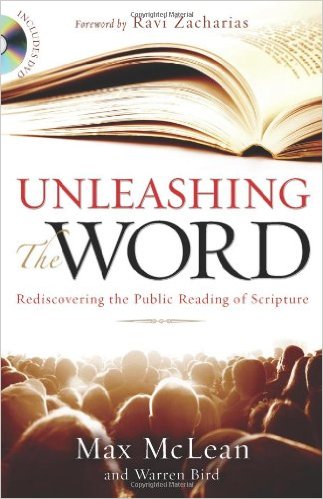 |
Unleashing the Word: Rediscovering the Public Reading of Scripture (Zondervan, 2009) Max McLean and Warren Bird McLean, whom many know from his narration of audio Bibles and stage versions of C.S. Lewis classics, draws on his own passion for Scripture reading to equip lay people and leaders. McLean and Bird recommend isolating the Scripture reading as a unique moment in worship, rather than blurring it into the announcements or the sermon. They argue that a flat, objective reading is not the ideal, but at the same time they encourage readers to be their authentic selves, not entertainers, clowns, junior pastors, or bores. The book also includes practical processes for preparation, performance and relaxation techniques, and advice on how to develop a Scripture reading team. A DVD comes with the book.
|
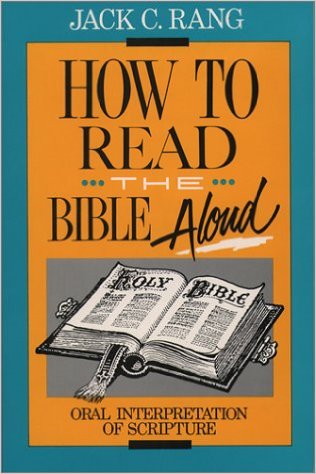 |
How to Read the Bible Aloud: Oral Interpretation of Scripture (Paulist Press, 1994) Jack C. Rang Rang explores oral interpretation, the use of breath, voice, and body, and literary style. The gift of this volume is Rang’s focus on the interpretative differences within biblical genres: narrative in Hebrew Scripture, narrative in Christian Scriptures, epistles, and Revelation and apocryphal literature. This would be a helpful text for both beginning and experienced Scripture readers. It’s out of print but can be purchased used. |
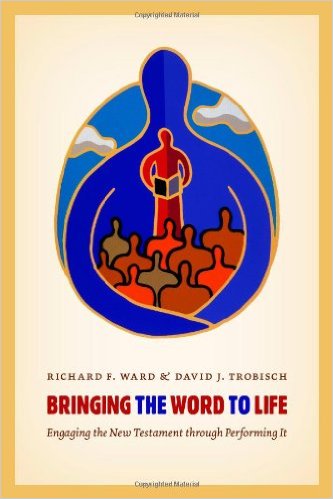 |
Bringing the Word to Life: Engaging the New Testament through Performing It (Eerdmans, 2013) Richard F. Ward and David J. Trobisch This volume focuses on the opportunity for people to hear the New Testament “again for the first time” as it is performed. The authors examine how manuscripts in ancient times were a vehicle for sound, not objects to stand alone. They compare the New Testament to a piece of music: To fully experience music, you play it. This book explains how performance criticism—studying a text by performing it—can guide our understanding and experience of Scripture, and it ends with techniques for practicing this. This would be a helpful resource for churches that want to dig deeper into the riches of biblical storytelling and performance as well as for those who want to discover a historic apologetic for the practice. |
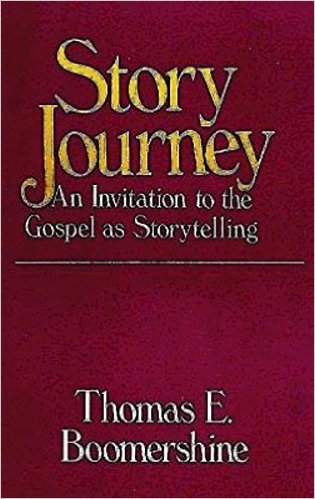 |
Story Journey: An Invitation to the Gospel as Storytelling (Abingdon Press, 1988) Tom Boomershine Boomershine’s passion for communicating the gospel as story and the role of the communicator as storyteller is evident in this book. Boomershine focuses on several gospel stories, teaching his readers how to learn them by heart, listen and connect to them, and tell them. Though this volume is primarily about telling the stories (in contrast to reading them), the techniques and connections Boomershine describes can be helpful for those who want to read these gospel stories in a more engaging manner. |
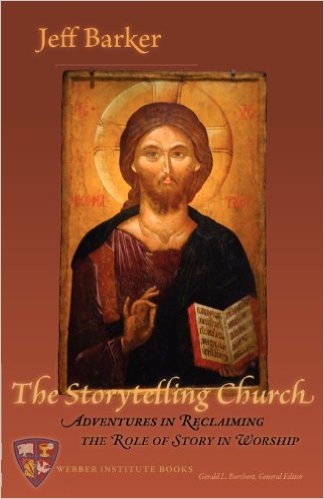 |
The Storytelling Church: Adventures in Reclaiming the Role of Story in Worship (Webber Institute Books, 2011) Jeff Barker Based on Barker’s work in theater and worship, this book focuses on story beyond the narrative of Scripture. Barker describes his work with the Ancient Hebrew Drama Project in collaboration with Thomas Boogaart of Western Theological Seminary and the enacted Scripture he has prepared with his theater students at Northwestern College in Iowa. He uses story to communicate the importance of story and image in worship, and he addresses practical considerations such as the challenge of responsive readings. This book is an aesthetic meditation on the possibilities of story and Scripture within worship, and would be helpful to any church’s theater artists, worship committees, and pastors who wish to expand their artistic and narrative horizons. |
Online Resources
“When You Read Scripture . . . : Suggestions for Helping Lay Readers Be More Effective,” Kenneth Baker. Reformed Worship, September 1991.
Baker offers suggestions to worship committees for strengthening the public reading of Scripture in worship.
“Getting the Story Off the Page: Advice on Putting Life into Scripture Reading,” W. J. Beeners. Reformed Worship, September 1990.
Beeners explains the structure of Isaiah 40 and Luke 2 so that their reading can be more understandable and compelling.
“Proclaiming the Word: Does Your Parish Need to Raise the Bar for Lectors?” George Miller. Catholic Online, May 31, 2012.
“Devoted to the Public Reading of Scripture,” Scott Newling. Matthias Media, The Briefing, March 1, 2011.
Newling provides strong historical, biblical, and theological rationale for devoting ourselves to the public reading of Scripture.
“Helps for Reading Scripture in Worship,” Cardiphonia, Nov. 25, 2010.
Thoughts and tips for Scripture reading in public worship.
“Reading Scripture in Public” by anima: the Forum for Worship and the Arts, Samford University.
This brief video designed for students is an appropriate introductory training video for all who read Scripture in worship. A downloadable checklist for reading Scripture aloud accompanies the video.